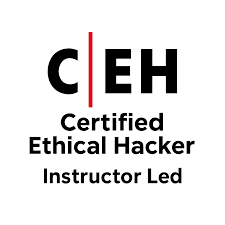Palo Alto Training – Learn Palo Alto Firewalls in 2025

Broken Access Control: Authorization Flaws Explained by WAHS Broken Access Control: Authorization Flaws Explained by WAHS Broken Access Control, listed as OWASP A5, is a critical flaw exposing authorization vulnerabilities that let attackers bypass security to access unauthorized resources. Per the WAHS certification, this article dives into access control flaws like insecure direct object references […]

Broken Access Control, listed as OWASP A5, is a critical flaw exposing authorization vulnerabilities that let attackers bypass security to access unauthorized resources. Per the WAHS certification, this article dives into access control flaws like insecure direct object references (IDOR), horizontal privilege escalation, and vertical privilege escalation. From IDOR attacks to BOLA attacks (Broken Object Level Authorization), we’ll explore real-world threats and OWASP authorization best practices to secure systems in 2025, including access control in microservices and cloud applications.
Broken Access Control occurs when an application fails to enforce proper role-based access control (RBAC) or ABAC security (Attribute-Based Access Control), allowing attackers to access restricted data or functions. For example, changing a URL parameter from /user/123 to /user/456 might reveal another user’s data—an IDOR attack. WAHS highlights risks like session management vulnerabilities, JWT security flaws, and forced browsing attacks, where attackers guess endpoints (e.g., /admin) to gain unauthorized access.
Attackers exploit authorization bypass techniques with methods like BFLA attacks (Broken Function Level Authorization), accessing admin functions as a regular user, or insecure file permissions, downloading sensitive files via guessed paths. Real-world access control breaches include the 2019 Capital One incident, where an OAuth misconfiguration exposed 100 million records. API authorization issues amplify these risks, especially in access control in microservices, where weak validation lets attackers manipulate IDs or tokens.
WAHS teaches robust defenses for access control testing and mitigation:
OWASP authorization best practices also secure access control in cloud applications by avoiding insecure direct object references and hardening session management vulnerabilities. Regular access control testing ensures resilience against BOLA and BFLA attacks.
Broken Access Control exposes systems to devastating authorization vulnerabilities, from IDOR attacks to horizontal privilege escalation. WAHS explains these risks with clarity, spotlighting real-world access control breaches and offering defenses like secure access control design. Whether tackling API authorization issues or access control in microservices, OWASP A5 demands attention. Master these skills with the WAHS certification at SecureValley Training Center, or check our program at WAHS. Protect your apps now!
For more info, see Wikipedia, University of Rennes, or Gartner.
Get certified with industry-leading cybersecurity certifications from EC-Council, PECB, Palo Alto Networks, and more.

Learn from world-class instructors Collaborate with top professionals Advanced training...

The CEH is the world's leading cybersecurity certification, recognized by...

Onsite training course Led by an instructor Interactive sessions

Asynchronous, self-study environment Video-streaming format Flexible learning schedule
Adding {{itemName}} to cart
Added {{itemName}} to cart

